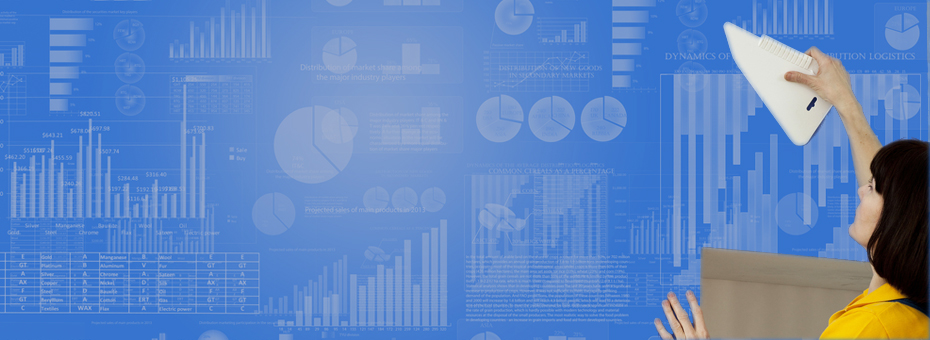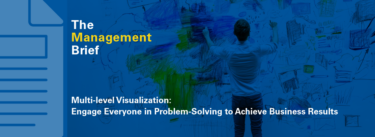How do I keep visual management from becoming “wallpaper?”
Yes, this is an excellent question! Too often, people believe that if you post information, people will automatically engage with it. If it were only that easy. Many managers try to convince everyone (including themselves) that they are visually managing their projects or departments, but during the gemba walk we see static, outdated displays. Are we just communicating information or really working with what is in front of us?
Whether you are running a project using an Obeya or managing a department using a board, here are a few ways to avoid “wall paper” syndrome.
- Have a clear mission and scope: This seems so obvious, but far too often teams do not explicitly declare the mission of their project or area, nor what aspects of it they need to manage visually (and why). When this is not discussed, we find walls covered with a hodge-podge of everything that is going on in the area and is it difficult to see where the team is now and where they need to be going forward.
- Team ownership: Visual management is a team sport. The project lead and the manager should not be the only ones posting information and managing the walls. Each team member is a contributor to the success of the team and thus should have some real estate on the walls to manage.
- Less is more: Team members sometimes get overzealous and want to show everything they are doing. Suggest this to them: “I only want to post what my colleagues need to know that affects them and those items where I need their help.”
- Dashboard, not cockpit: In today’s data rich world, it’s tempting to post all types of metrics. Unfortunately teams end up with walls that look like the cockpit of a jumbo jet (which is fine if you are an experienced pilot flying a complex machine). In PD, our team members only need key indicators everyone can understand and use to make informed decisions. It’s about making sure the team can see that they are on the right track. Keep it simple like a dashboard on a car.
- Project and product view: In product development, we are typically managing projects, but more importantly we are creating products. Good visual management provides BOTH the view of the project and the product. Most of the time, teams fixate on the tasks and metrics associated with the project and assume the project measures adequately show that the progress of the product. This is not always the case. By having a view of the product (e.g. rendering, print, SLA part, prototype, etc.) in the area, team members can see for themselves how the product is maturing (or not). Discussions tend to be richer and more issues are surfaced when there is some visualization of the product close by.
- Tactile: Visual Management is not meant to be a spectator sport. Printing some slides, pinning them to a wall and then presenting them is not much different than a passive slide presentation. People should be able to adjust the visuals on the fly to quickly communicate status, changes, and most importantly, flag issues. Good things to use therefore are sticky notes, colored dots, magnets, whiteboards or even better white walls!
- Actionable: Most items that are visualized should prompt team members to some sort of action, be it to confirm, question, or contest what is on the wall.
- Quick resolution to issues: Visual management, either Obeya or department level boards, should be the andon system for the PD teams. Issues should be easy to surface, visually seen by all and most importantly need to be followed up with a robust yet rapid PDCA cycle. Many PD teams make their problems visible, but do not rapidly resolve them. If a team member has a hot pink sticky note on their board that has not been resolved in weeks, how long do you think that team member will actively participate in the visual management process? This is typically the most common cause of visual management fizzling out.
- Flexibility: Product development is an ever changing environment, so the visual management you use needs to easily adapt. Periodically step back and ask yourself and your team members if the visuals and the process are still helping to achieve your mission. Static visual management typically results in team members questioning its real value as it will no longer suit their needs.
- Regular rituals: Management is clearly an ongoing process. Teams need to set a cadence on what and how often they will cover the elements they are visually managing their activities. People need to make it a regular habit to attend the sessions. (This can be the double edged sword of visualization – it helps bring people together, but it can also allow people to detach from the process as they can get “caught up” by walking the walls whenever it’s convenient for them) If someone is not attending or actively participating, ask why. Likely there is a gap in the visual management process that needs to be addressed.
- See progress: This is a pitfall many managers fall into. A good practice to keep meetings short and focused is to discuss the gaps (red items), not what is going well or has been completed. And while the focus of visual management is to surface and resolve problems so that teams may achieve their mission, it’s also important that the team see the progress they are making along the way. It is wise for leaders to periodically show through that the team is winning the game and recognize team members’ contributions.
As you can see, the visuals are the relatively easy part; the management involved is an ongoing activity that requires everyone’s participation. Keep it simple, continuously ask team members if they are getting what they need from the process to be successful, and adapt as team members’ needs and conditions change.






